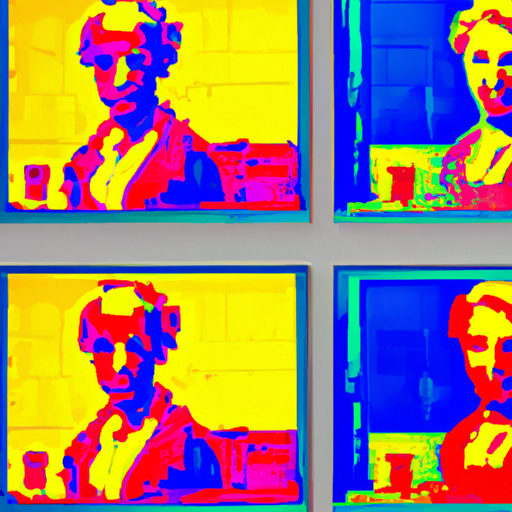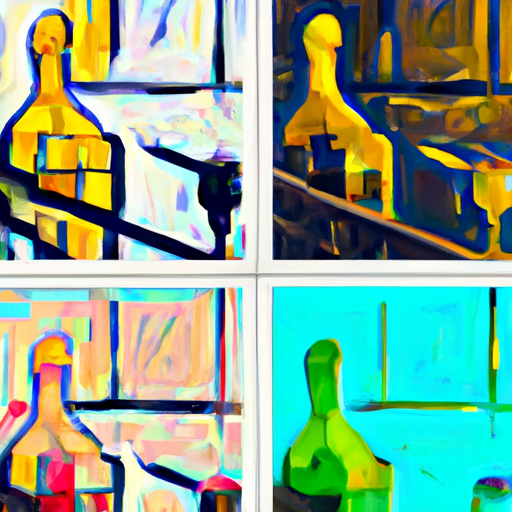
-
Table of Contents
AI-Generated Art: From Pixels to Masterpieces

Artificial Intelligence (AI) has revolutionized various industries, and the world of art is no exception. With the ability to analyze vast amounts of data and learn from it, AI has become a powerful tool for creating art. From generating abstract paintings to composing music, AI-generated art has gained significant attention in recent years. In this article, we will explore the fascinating world of AI-generated art, its impact on the art community, and the challenges it presents.
The Rise of AI in Art
Artificial Intelligence has made remarkable progress in recent years, thanks to advancements in machine learning and deep learning algorithms. These algorithms enable computers to learn patterns and generate new content based on the data they have been trained on. This capability has opened up new possibilities for creating art.
One of the earliest examples of AI-generated art is the DeepDream algorithm developed by Google in 2015. DeepDream uses a neural network to analyze and modify images, creating surreal and dream-like visuals. The algorithm gained popularity when artists started using it to transform ordinary photos into mesmerizing works of art.
Another significant milestone in AI-generated art is the creation of “The Next Rembrandt” project. In 2016, a team of data scientists and art historians used machine learning algorithms to analyze Rembrandt’s paintings and create a new artwork in his style. The result was a stunning portrait that closely resembled Rembrandt’s work, demonstrating the potential of AI in replicating artistic styles.
AI as an Artistic Collaborator
AI is not just limited to replicating existing artistic styles; it can also serve as a creative collaborator for artists. Many artists have embraced AI as a tool to enhance their artistic process and explore new possibilities.
For example, artist Mario Klingemann has been using AI algorithms to create unique and mesmerizing artworks. He combines his artistic vision with the capabilities of AI algorithms to generate stunning visuals that would be impossible to create manually. Klingemann sees AI as a tool that expands his creative palette and allows him to push the boundaries of traditional art.
Similarly, musician and composer Holly Herndon has been experimenting with AI-generated music. She collaborated with an AI system called “Spawn” to compose and perform music that combines human creativity with machine intelligence. The result is a unique blend of traditional musical elements and AI-generated sounds, creating a new and innovative musical experience.
The Impact on the Art Community
The emergence of AI-generated art has sparked a lively debate within the art community. Some artists and critics view AI as a threat to human creativity, arguing that true art can only be created by human hands and minds. They fear that AI-generated art will devalue the role of the artist and diminish the uniqueness of artistic expression.
On the other hand, many artists and experts see AI as a powerful tool that can enhance human creativity and open up new artistic possibilities. They believe that AI-generated art should be seen as a collaboration between humans and machines, where the artist’s vision and creativity are still essential.
AI-generated art has also raised questions about the concept of authorship and ownership. Who owns the rights to an AI-generated artwork? Is it the artist who trained the AI system or the AI system itself? These legal and ethical questions are yet to be fully addressed and will likely shape the future of AI-generated art.
Challenges and Limitations
While AI-generated art holds great promise, it also faces several challenges and limitations. One of the main challenges is the lack of interpretability. AI algorithms often work as black boxes, making it difficult to understand how they generate specific outputs. This lack of transparency raises concerns about bias and the potential for unintended consequences.
Another limitation is the reliance on existing data. AI algorithms learn from the data they are trained on, which means they can only generate content that is similar to what they have seen before. This limitation restricts the ability of AI to create truly original and groundbreaking art.
Furthermore, AI-generated art often lacks the emotional depth and human connection that is inherent in traditional art. While AI can mimic artistic styles and create visually appealing works, it struggles to capture the complex emotions and narratives that human artists can convey.
The Future of AI-Generated Art
Despite the challenges and limitations, the future of AI-generated art looks promising. As AI algorithms continue to improve and become more sophisticated, we can expect to see even more impressive and innovative artworks.
AI-generated art has the potential to democratize the art world by making it more accessible to a wider audience. It can also serve as a source of inspiration for human artists, pushing them to explore new techniques and ideas.
Moreover, AI-generated art can be used in various practical applications, such as designing architecture, creating visual effects in movies, and generating personalized artwork based on individual preferences.
Key Takeaways
- AI-generated art has gained significant attention in recent years, thanks to advancements in machine learning and deep learning algorithms.
- AI can replicate existing artistic styles and serve as a creative collaborator for artists, expanding their creative palette.
- The impact of AI-generated art on the art community is a subject of debate, with some seeing it as a threat to human creativity and others as a tool for enhancing artistic expression.
- AI-generated art faces challenges such as lack of interpretability, reliance on existing data, and limitations in capturing emotional depth.
- The future of AI-generated art looks promising, with potential applications in various industries and the ability to inspire human artists.
In conclusion, AI-generated art has the power to transform the art world by pushing the boundaries of creativity and opening up new possibilities. While it presents challenges and limitations, the collaboration between humans and machines has the potential to create truly remarkable and groundbreaking artworks. As AI continues to evolve, we can expect to witness even more astonishing masterpieces generated by pixels and algorithms.
